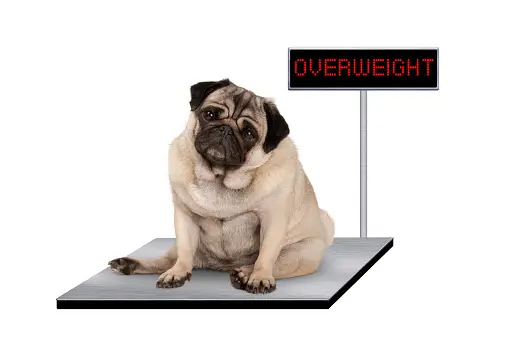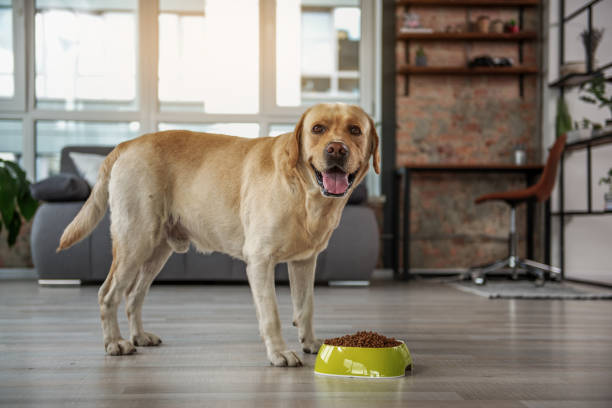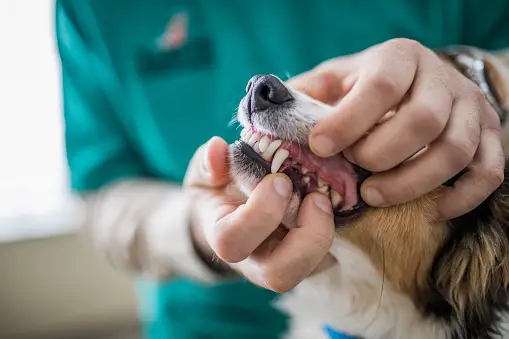Concerned about your dog’s weight? Maintaining a healthy size for your furry friend is crucial for their overall well-being. In this article, we will provide you with valuable tips and insights on how to effectively manage your dog’s weight. From understanding the importance of a balanced diet to incorporating regular exercise into their routine, we have got you covered. Let’s dive in and discover the best practices for keeping your dog at a healthy size.
Understanding the Importance of Managing Dog Weight
The health risks associated with overweight dogs
It is crucial to recognize the significance of managing your dog’s weight to ensure their overall well-being and prevent potential health risks. Dogs that are overweight or obese are susceptible to various health problems that can negatively impact their quality of life.
One of the primary health risks associated with overweight dogs is an increased risk of developing chronic conditions such as diabetes. Just like humans, dogs can also suffer from this metabolic disorder when their body weight is not properly managed. Diabetes in dogs can lead to a range of complications, including organ damage, nerve damage, and a compromised immune system.
Another significant health risk is joint and mobility issues. Extra weight puts excessive strain on a dog’s joints, leading to conditions like arthritis and reduced mobility. Over time, this can cause chronic pain and discomfort, hindering their ability to enjoy physical activities and reducing their overall quality of life.
Obesity in dogs can also lead to respiratory problems, notably difficulty breathing, due to the excess fat pressing against their lungs and diaphragm. This can result in reduced stamina, increased fatigue, and even more serious respiratory conditions if left untreated.
The benefits of maintaining a healthy weight for your dog
Maintaining a healthy weight for your dog comes with numerous benefits that contribute to their overall well-being and longevity. By keeping your furry friend at an ideal weight, you can ensure a happier and healthier life for them.
One of the primary benefits is improved cardiovascular health. Dogs that are at a healthy weight have a reduced risk of developing heart diseases, including heart failure and high blood pressure. A healthy cardiovascular system enables them to maintain proper blood circulation and oxygen supply to all organs, promoting their overall vitality.
Maintaining a healthy weight also plays a crucial role in preventing orthopedic issues in dogs. By avoiding excessive strain on their joints, you can significantly reduce the risk of developing conditions such as arthritis or hip dysplasia. This ensures that your dog can maintain an active lifestyle, engage in play, and enjoy walks without experiencing discomfort or pain.
Furthermore, a healthy weight contributes to better mental well-being for your dog. Overweight dogs are more prone to depression and anxiety, often resulting from limited physical activity and a decreased ability to engage in their natural instincts. By keeping them at a healthy weight, you provide them with the opportunity to remain mentally stimulated, leading to improved mood and overall happiness.
In conclusion, understanding the importance of managing your dog’s weight is crucial for their overall health and well-being. By recognizing the health risks associated with overweight dogs and embracing the benefits of maintaining a healthy weight, you can ensure that your furry companion leads a long, active, and happy life.
Creating a Balanced Diet for Your Dog
When it comes to managing your dog’s weight and keeping them at a healthy size, one of the most important factors to consider is their diet. A balanced diet plays a crucial role in ensuring your dog receives the right nutrients while maintaining an appropriate caloric intake. Here are some tips for creating a balanced diet for your furry friend.
Determining the Appropriate Caloric Intake for Your Dog
Every dog has unique caloric needs based on factors such as their age, size, activity level, and overall health. It is essential to determine the appropriate caloric intake for your dog to prevent overfeeding or underfeeding, both of which can lead to weight management issues.
Consulting with your veterinarian is the best way to determine the ideal caloric intake for your dog. They will consider your dog’s specific needs and provide you with a recommended daily caloric intake. This information will serve as a guideline for creating a balanced diet for your dog.
Choosing High-Quality Dog Food
The quality of the dog food you choose plays a significant role in your dog’s overall health and weight management. Opting for high-quality dog food ensures that your furry friend receives the necessary nutrients without unnecessary fillers or additives that can contribute to weight gain.
When selecting dog food, look for options that contain real meat as the primary ingredient. Avoid products that list grains, by-products, or artificial ingredients at the top of the ingredients list. Reading and understanding the label is crucial to ensure you are making the best choice for your dog’s health.
Incorporating Nutritious Snacks and Treats
Snacks and treats are an enjoyable part of a dog’s life, but they can also contribute to weight gain if not chosen wisely. Instead of opting for high-calorie treats or table scraps, consider incorporating nutritious snacks into your dog’s diet.
Vegetables such as carrots, green beans, or cucumber slices can make excellent low-calorie treats. Additionally, there are many commercially available dog treats specifically formulated for weight management. These treats are often lower in calories but still tasty and satisfying for your dog.
Remember to consider these snacks and treats as part of your dog’s overall caloric intake. Be mindful of the quantity and frequency to ensure they are not causing an imbalance in their diet.
By creating a balanced diet for your dog, determining their appropriate caloric intake, choosing high-quality dog food, and incorporating nutritious snacks and treats, you can effectively manage your dog’s weight and keep them at a healthy size. Always consult with your veterinarian for personalized advice and guidance on your dog’s specific dietary needs.
Establishing a Regular Exercise Routine
Regular exercise is essential for maintaining a healthy weight and overall well-being in dogs. By establishing a consistent exercise routine, you can help your furry friend stay fit and active. Here are some important factors to consider when developing an exercise plan for your dog.
The recommended amount of daily exercise for different dog breeds
Different dog breeds have varying exercise needs based on their size, energy levels, and overall health. It is crucial to understand your dog’s specific requirements to ensure they get enough physical activity without overexerting themselves. Here are some general guidelines for daily exercise based on different breeds:
- Small Breeds (e.g., Chihuahuas, Dachshunds): 30 minutes to 1 hour of exercise per day. Short walks, indoor play sessions, and interactive toys can help meet their exercise needs.
- Medium Breeds (e.g., Beagles, Bulldogs): 1 to 2 hours of exercise per day. Engaging in longer walks, interactive games, and moderate-intensity activities like swimming or fetch can keep them active.
- Large Breeds (e.g., German Shepherds, Labrador Retrievers): 2 to 3 hours of exercise per day. Regular walks, jogging, running, and more vigorous activities such as agility training or hiking can help them burn off energy.
Remember, these are just general guidelines, and individual dogs may have unique needs. Consulting with your veterinarian can provide specific exercise recommendations tailored to your dog’s breed, age, and health condition.
Engaging in activities that promote weight loss
If your dog needs to shed a few pounds, incorporating activities that promote weight loss can be beneficial. Here are some exercises you can try to help your dog lose weight:
- Increased duration and intensity of walks: Gradually increase the length and speed of your walks to challenge your dog’s endurance and burn more calories. Consider incorporating inclines or stairs for an added workout.
- Swim sessions: Swimming is a low-impact exercise that is gentle on joints while providing an excellent cardiovascular workout. If your dog enjoys water, swimming can be an effective weight loss activity.
- Interactive toys and puzzles: Engage your dog’s mind and body by using interactive toys and puzzles that require physical effort and problem-solving skills. These activities can help burn calories and keep your dog mentally stimulated.
Making exercise fun and stimulating for your dog
To ensure your dog stays motivated and enjoys their exercise routine, it is essential to make it fun and stimulating. Here are some tips to make exercise enjoyable for your furry companion:
- Incorporate playtime: Engage in games like fetch, tug-of-war, or hide-and-seek to make exercise feel like playtime. These activities tap into your dog’s natural instincts and provide mental and physical stimulation.
- Try new activities: Variety is the spice of life, even for dogs. Introduce new activities like agility training, obedience classes, or organized group walks to keep your dog’s interest high and prevent boredom.
- Socialize with other dogs: Arrange playdates or visits to dog parks where your dog can interact and play with other dogs. This not only promotes physical exercise but also provides socialization opportunities, which are crucial for their overall well-being.
Remember to always consider your dog’s abilities, limitations, and preferences when designing their exercise routine. By establishing a regular exercise routine, incorporating weight loss activities, and making it enjoyable, you can help your dog maintain a healthy weight and live a happy and active life.
Monitoring and Adjusting Your Dog’s Weight
Regularly weighing your dog
Regularly weighing your dog is an essential step in managing their weight effectively. By monitoring your dog’s weight on a consistent basis, you can track any fluctuations and take appropriate action accordingly. Here are a few tips to help you with this process:
- Invest in a reliable and accurate pet scale: Having a pet scale at home makes it convenient to weigh your dog regularly. Look for a scale that is designed specifically for pets and has a large enough platform to accommodate your dog’s size.
- Establish a weighing routine: Set a schedule to weigh your dog, ideally once a month or as recommended by your veterinarian. Consistency is key to accurately monitoring their weight.
- Weigh your dog on an empty stomach: To ensure accurate measurements, weigh your dog before they eat or drink anything. This will help eliminate any variations caused by food or water intake.
Recognizing signs of weight gain or loss
It’s crucial to be able to recognize signs of weight gain or loss in your dog. By being aware of these indicators, you can address any issues promptly and make necessary adjustments to their diet and exercise routine. Here are some signs to watch out for:
- Visual and physical cues: Pay attention to your dog’s overall body shape and appearance. An overweight dog may have a lack of definition in their waist, noticeable fat deposits, or difficulty feeling their ribs. Conversely, an underweight dog may have visible ribs, a prominent backbone, or a very thin appearance.
- Changes in behavior and energy levels: Weight gain or loss can greatly impact your dog’s energy levels and behavior. An overweight dog may become lethargic or less interested in physical activities, while an underweight dog may appear weak, restless, or excessively hungry.
- Alterations in appetite and eating habits: Keep an eye on any changes in your dog’s appetite. An increased appetite without corresponding weight gain could indicate an issue with metabolism, while a decreased appetite may be a sign of an underlying health problem.
Consulting with a veterinarian for guidance
When it comes to managing your dog’s weight, consulting with a veterinarian is crucial. They have the expertise to provide personalized advice based on your dog’s specific needs and health condition. Here’s why seeking professional guidance is important:
- Accurate assessment: A veterinarian can accurately assess your dog’s current weight, body condition, and overall health. They can determine their ideal weight range and make appropriate recommendations.
- Tailored diet and exercise plans: Every dog is unique, and a veterinarian can create a customized diet and exercise plan that suits your dog’s breed, age, activity level, and any underlying health concerns. This ensures that your dog receives the right balance of nutrients while gradually achieving a healthy weight.
- Monitoring health conditions: Excessive weight gain or loss can be a symptom of an underlying health condition. A veterinarian can conduct thorough examinations, run necessary tests, and identify any potential health issues that may be contributing to your dog’s weight problems.
Remember, managing your dog’s weight is a team effort between you and your veterinarian. By regularly weighing your dog, recognizing signs of weight gain or loss, and seeking guidance from a veterinarian, you can ensure that your furry friend maintains a healthy size and overall well-being.
Addressing Behavioral Factors
Identifying and addressing emotional eating in dogs
Emotional eating can be a common issue among dogs, just like in humans. Some dogs may turn to food as a source of comfort or to cope with stress, boredom, or loneliness. If you notice that your dog is frequently overeating or eating even when not hungry, it may be a sign of emotional eating. Here are some tips to address this behavior:
- Monitor meal portions: Ensure that you are feeding your dog appropriate portions and sticking to a regular feeding schedule. Avoid free-feeding, as it can encourage overeating.
- Provide mental stimulation: Engage your dog in activities that keep their mind occupied, such as puzzle toys or interactive games. This can help divert their attention from food and reduce emotional eating.
- Increase exercise: Regular physical activity not only helps in weight management but also promotes mental well-being. Take your dog for daily walks or play games that require them to move around. This can help in reducing emotional eating by channeling their energy into more productive outlets.
- Create a calm environment: Dogs are sensitive to their surroundings, and a stressful environment can trigger emotional eating. Ensure that your dog has a peaceful and secure space at home. Provide comfortable bedding, soothing music, or try using calming pheromone diffusers to create a relaxing atmosphere.
Dealing with food aggression or begging behaviors
Food aggression or begging behaviors can contribute to overeating and weight gain in dogs. It’s important to address these behaviors to prevent them from interfering with your dog’s weight management. Here are some strategies to deal with food aggression or begging:
- Establish feeding boundaries: Teach your dog to wait patiently for meals by implementing a “sit” or “stay” command before feeding. This helps in setting clear boundaries and discouraging aggressive or impatient behavior.
- Use positive reinforcement: Reward your dog with praise or small treats when they exhibit calm and patient behavior during mealtimes. This reinforces positive habits and helps them associate good behavior with rewards.
- Avoid reinforcing begging: While it can be tempting to give in to your dog’s begging, it’s important to resist. Reinforcing begging behavior by giving them table scraps or treats can encourage overeating and weight gain. Instead, provide your dog with appropriate treats during training sessions or as rewards for good behavior.
- Consult a professional: If your dog’s food aggression or begging behaviors persist or worsen, it may be beneficial to seek guidance from a professional dog trainer or behaviorist. They can provide personalized strategies and techniques to address these issues effectively.
Managing stress and anxiety in your dog
Stress and anxiety can have a significant impact on a dog’s eating habits and overall well-being. Just like humans, dogs can experience stress due to various factors, such as changes in their environment, separation anxiety, or fear of certain stimuli. Here are some ways to help manage stress and anxiety in your dog:
- Establish a routine: Dogs thrive on routine, as it provides them with a sense of security and predictability. Stick to a consistent schedule for feeding, exercise, and playtime. This can help reduce stress and create a calming environment for your dog.
- Provide a safe space: Create a designated area where your dog can retreat to when they feel anxious or overwhelmed. This can be a crate, a cozy corner with their bed, or a designated room. Make sure this space is comfortable, quiet, and stocked with their favorite toys or blankets.
- Engage in calming activities: Incorporate calming activities into your dog’s daily routine. This may include gentle massages, aromatherapy with dog-safe essential oils, or playing soothing music. These activities can help relax your dog and alleviate stress.
- Consider professional help: If your dog’s stress and anxiety persist or significantly impact their quality of life, it may be beneficial to consult with a veterinarian or a certified animal behaviorist. They can assess your dog’s specific needs and recommend appropriate interventions, such as behavior modification techniques or prescribed medications.
By addressing these behavioral factors, you can help your dog maintain a healthy weight and overall well-being. Remember to be patient and consistent while implementing these strategies, as behavior changes take time. If you’re unsure about the best approach for your dog, consult with a professional for personalized guidance and support.
In conclusion, maintaining a healthy weight for your dog is crucial for their overall well-being and longevity. By following these tips for managing your dog’s weight, such as monitoring their food intake, providing regular exercise, and seeking veterinary advice when necessary, you can ensure that your furry friend stays in optimal shape. Remember, a healthy dog is a happy dog, so prioritize their weight management as an essential part of their care routine.







